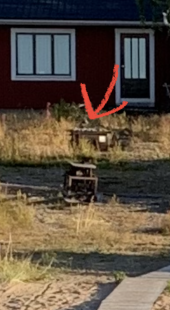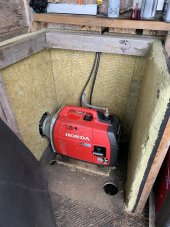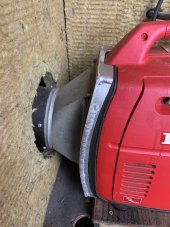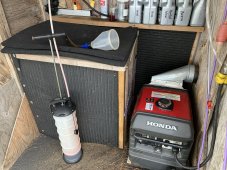I’ve built a little concrete shed/bunker for our old generator a few years ago. Even with a fairly effective pipe fan (183 m3/h) sucking air from high inside the shed and an air intake in the door (ie should get circulation) the generator didn’t quite get enough air. But it has worked perfectly since I connected an exhaust extension to it.
I don’t have any good pictures, but here is one from afar and one taken winter time:


Anyway, the old generator has given up and I got a chance to get a Honda 30IS for a good price.
Does anyone have any experience on extending the exhaust on those things? They ‘recommend’ against it in the manual (a picture of it crossed over in red…), but it does seem like one of those things that could damage things if not done properly but should work most of the time. But is the exhaust even accessible? What type of connection would be required? And how sensitive is an engine to too little oxgene?
Any thoughts are appreciated!!
I don’t have any good pictures, but here is one from afar and one taken winter time:


Anyway, the old generator has given up and I got a chance to get a Honda 30IS for a good price.
Does anyone have any experience on extending the exhaust on those things? They ‘recommend’ against it in the manual (a picture of it crossed over in red…), but it does seem like one of those things that could damage things if not done properly but should work most of the time. But is the exhaust even accessible? What type of connection would be required? And how sensitive is an engine to too little oxgene?
Any thoughts are appreciated!!





